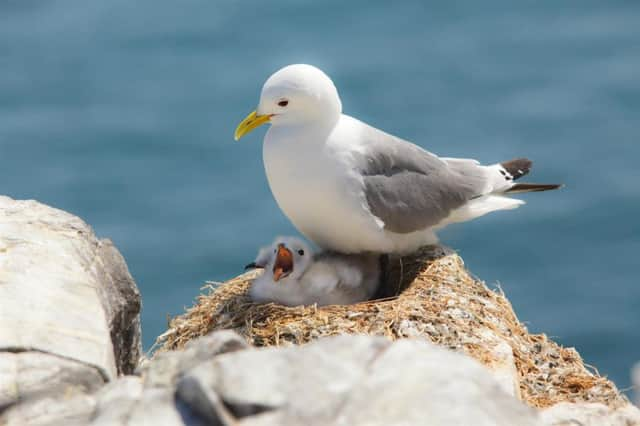World seabird populations in catastrophic decline


This means around 230 million seabirds have disappeared across the globe since the 1950s.
Scotland is the nesting ground for around five million seabirds of 24 species, nearly a third of the European Union total.
Advertisement
Hide AdAdvertisement
Hide AdThe latest study mirrors worrying declines among Scottish populations in recent decades.
Surveys show numbers of 12 key species declined by 42 per cent between 1986 and 2013 alone, with some enduring particularly severe losses.
The worst hit have been the arctic skua, falling by 82 per cent from 1986 levels, and the black-legged kittiwake, dropping by 77 per cent over the same period.
Phil Taylor, seabird recovery officer for RSPB Scotland, assisted the researchers from Canada and Australia who worked on the new study.
“The general trend is echoed here in Scotland,” he said. “In some species it is much worse but in others it is much better. But we have had a long-term decline for at least the past 15 years.
“Arctic skuas have declined from about 4,000 to 500, so that’s been a really sharp decline and really significant.
“Ten key species have been in chronic decline since 2000.
“Scotland has some of the highest concentrations of seabirds in the world.”
He said the creation of special protection areas at sea will be an important step towards saving the birds in Scotland.
Advertisement
Hide AdAdvertisement
Hide AdSeabirds play an important role in the health of ocean habitats. They often travel huge distances to search for food over their long lifetimes, but return to the same colonies to breed.
They eat and are eaten by a variety of other marine species as well as transporting nutrients in their waste back to coastal areas where they breed, helping to fertilise entire food webs.
Colony numbers help scientists gauge the health of the oceans the birds call home.
The study, which analysed nearly a fifth of global seabird populations, showed overall numbers declined by 69.6 per cent since the 1950s.
Climate change, overfishing, pollution from plastics and oil, and the introduction of non-native predators have all been blamed for the steep decline.
The researchers have warned the results are a stark indication of the dismal state of the world’s oceans and the effect humans are having on the planet, and conservation action should be stepped up.
“Seabirds are particularly good indicators of the health of marine ecosystems,” said lead researcher Michelle Paleczny, from Canada’s University of British Columbia.
“When we see this magnitude of decline, we can see there is something wrong with marine ecosystems. It gives us an idea of the impact we are having.
“Our work demonstrates the strong need for increased seabird conservation effort internationally. Loss of seabirds causes a variety of impacts in coastal and marine ecosystems.”